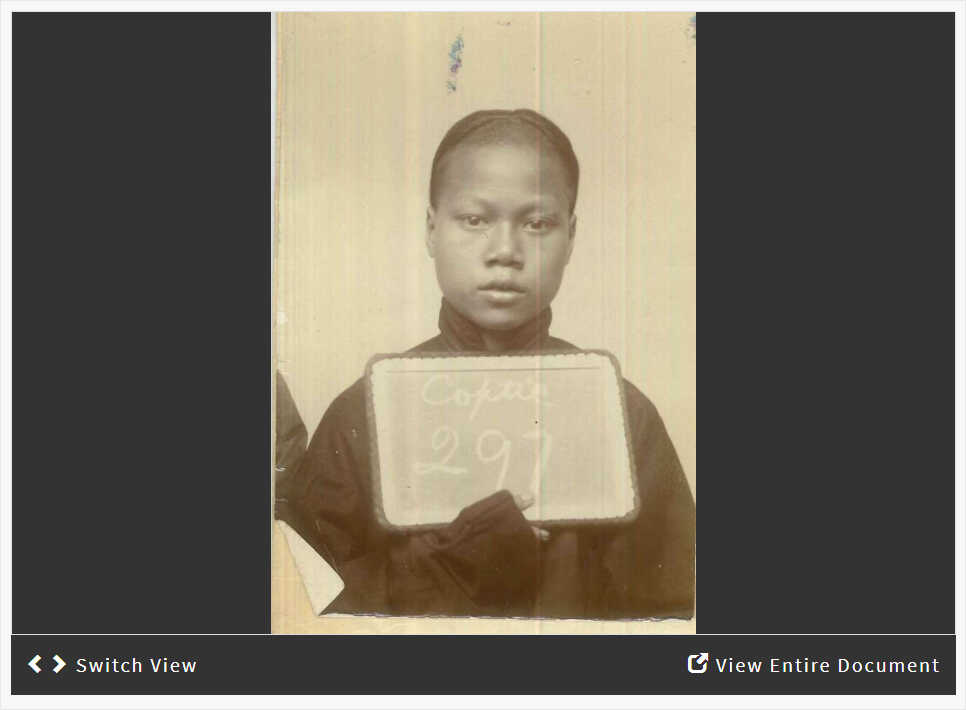In this activity, students will contextualize a photograph and consider the experience of a young Chinese man who was exhibited as part of an ethnographic display at the 1899 National Export Exposition in Philadelphia.
Suggested Teaching Instructions
Use this activity during a unit on immigration and the Chinese Exclusion Act, imperialism, or while teaching the history of anthropology, "otherness," and living ethnological displays. For grades 6-8. Approximate time needed is 30 minutes.
Display the activity for the full class, or ask students to open the activity individually or in small groups. Students will see only the photograph of Lee Tso, not the whole document to which his photograph is attached (his identification paper to enter the United States).
Ask students to closely examine his face, body language, and any objects in the picture. They should then speculate as to the purpose of the photograph.
Next, they will learn that the photo is attached to a document. Click "Switch View" to see the full page and "View Entire Document" to read more.
Students should respond to:
- What new information have you learned about Lee Tso?
- What questions does this document raise in your mind?
Discuss students' responses as a class, then share the following background information:
Chinese Exclusion Act:
The Chinese Exclusion Act was a law passed in 1882 that excluded Chinese laborers from immigrating to the United States. Initially, these restrictions on immigration were only valid for 10 years, but they were extended multiple times. Even after its repeal in 1943, a strict "quota" system effectively banned Chinese immigration until the 1965 Immigration Act struck it down. The Chinese Exclusion Act was the first to exclude potential immigrants primarily because of their nationality, a clear example of anti-Chinese racism in Federal law. These laws did not just exclude potential immigrants — even U.S. born Chinese citizens were required to obtain special permission and certification to return to the United States after traveling abroad.
Living Exhibits and Chinese Village in the 1899 Export Exposition:
The Chinese Exclusion Act occurred at a time when the United States and other mostly Western countries were using their power to conquer and control other societies around the world. This is known as imperialism – when a country exerts its power and influence over other countries or territories through diplomacy or military force. An extension of imperialism was the practice of living exhibits (also known as human zoos), in which non-Western peoples were displayed as proof of their "otherness" and of Western civilization's superiority.
Such an exhibit occurred at the 1899 Export Exposition in Philadelphia, in which Chinese laborers of varying occupations were imported for the purpose of being exhibited as part of a replica "Chinese Village" for the entertainment of fair-goers. Because of the Chinese Exclusion Act, those performers had to get special permission to enter the country. This document is the identification paper of Lee Tso, a 15 year old who was "on exhibit" at the fair.
Continue the class discussion by introducing the following questions:
- What are the strengths and weaknesses of this document as a source of information about the Chinese Village at the Export Exposition?
- What can we know from studying this document?
- What kinds of information are missing?
Return to the activity and ask students to respond to the writing prompt in the "When You're Done" section:
If you could interview Lee Tso with questions about his experiences, what would you ask him? Write a letter to Lee Tso including your questions and referring to specific details in the document.





